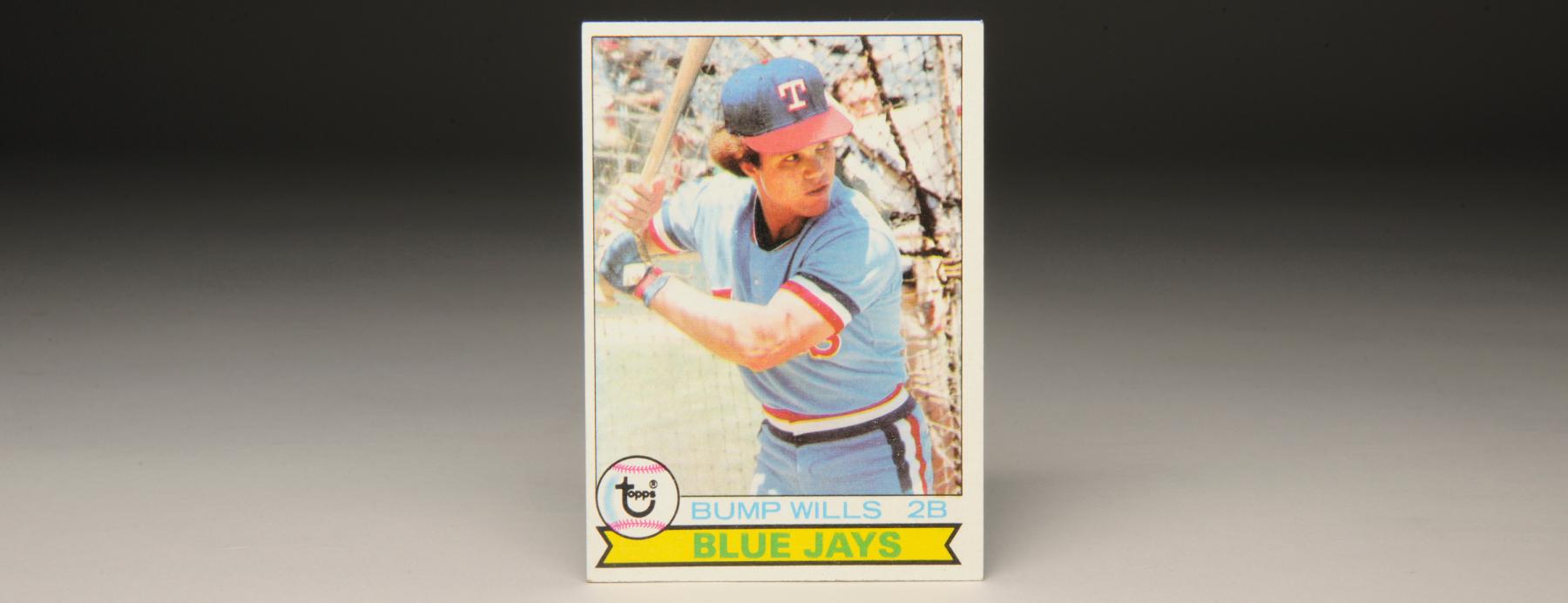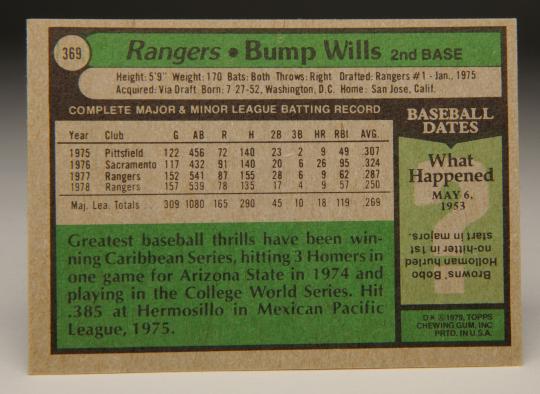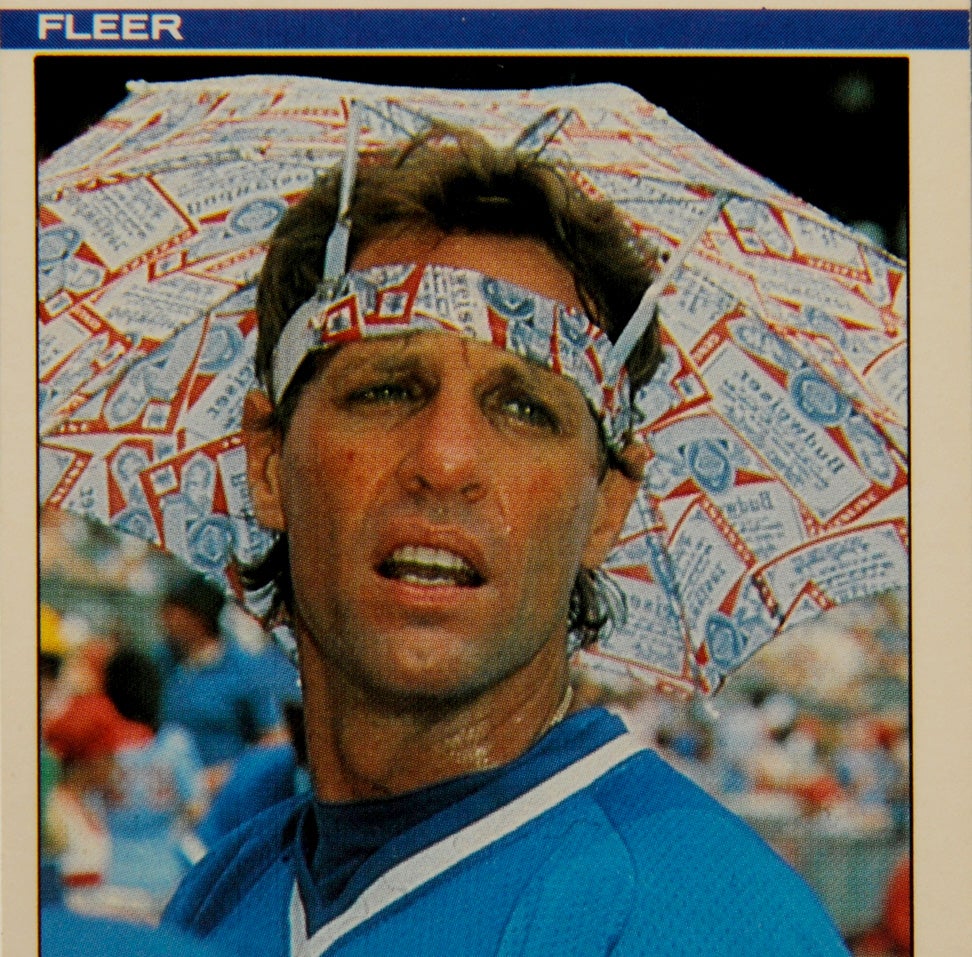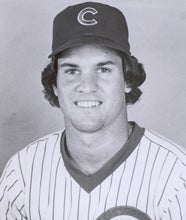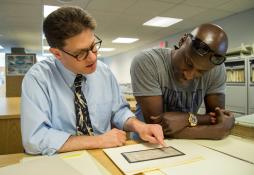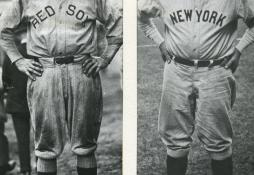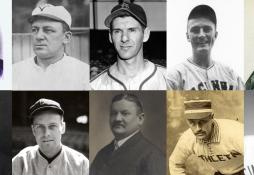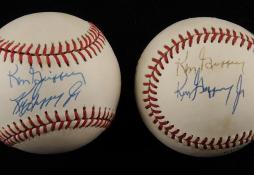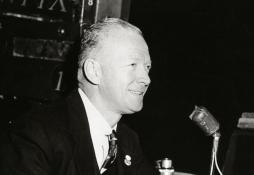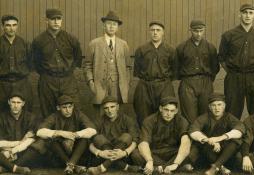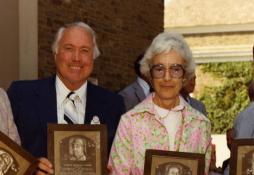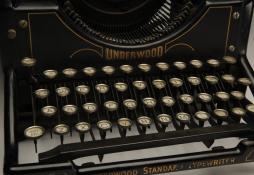- Home
- Our Stories
- #CardCorner: 1979 Topps Bump Wills
#CardCorner: 1979 Topps Bump Wills
Hall of Fame staffers are also baseball fans and love to share their stories. Here is a fan's perspective from Cooperstown.
Bump Wills’ 1979 Topps card should produce an immediate double take, especially from those viewing it for the first time. For many collectors, this is an iconic card, one that features the switch-hitting second baseman as a member of the Toronto Blue Jays, even though he is clearly wearing the powder blue uniform of the Texas Rangers. The reality is this: Wills never played for the Blue Jays’ franchise, not at any time during or after the 1979 season. In fact, Wills was never part of the Toronto organization in any way.
So what happened here, thereby creating one of the most famous “error” cards in Topps history? In 2002, former Topps Chewing Gum president and baseball card legend Sy Berger visited the Hall of Fame in Cooperstown for a 50th anniversary celebration of Topps baseball cards, giving us the opportunity to ask him directly about the reasons behind the Wills error. According to Sy (who passed away in December of 2014), he had received a call from a friend after the 1978 season, telling him that Wills was about to be traded from the Rangers to the Blue Jays as part of a major trade. Although the trade had yet to be announced, the friend assured Berger that it was a “done deal.”
The report made some logical sense. Wills had experienced a down season in 1978 after playing so well as a rookie in 1977. The Blue Jays also needed help at second base.
Convinced that he had a scoop and figuring that he could release an accurate and updated card ahead of the curve, Berger said he instructed his production people to attach the name “Blue Jays” to the bottom of the Wills card. And thus was born the famed “Bump Wills as a Blue Jay” card.
After producing the card during the winter of 1978, Topps issued it to the public in March of 1979, the usual time that Topps typically released its new set of cards. Unfortunately, like many trade discussions, the Bump Wills “trade” turned out to be nothing more than rumor. The Rangers kept their speedy second baseman, who remained in Texas for three more seasons before finally being dealt—not to the Blue Jays, but to the Chicago Cubs—prior to Opening Day in 1982.
With the trade to Toronto falling through, Topps was left mildly uncomfortable because of the mistake on the Wills card. Once Opening Day rolled around and Berger realized that no trade was going to take place, Topps decided to correct the error and release a revised and corrected card, this time showing the name “Rangers” at the bottom of the card. As a result, there are two 1979 Bump Wills cards in circulation. The corrected “Rangers” version is considered the more valuable, since fewer of those cards were produced, making it scarcer than the original “Blue Jays” version. The only thing scarcer might have been Berger’s relationship with his friend, who had clearly given him some misguided information and had ceased becoming a source of knowledge for Topps Chewing Gum.
Wills’ major league career began with much fanfare in the mid-1970s. As the son of Maury Wills, the legendary basestealer of 1960s vintage, Elliott Taylor “Bump” Wills was already well known to fans when he made his debut for the Rangers in 1977. Nicknamed Bump for his childhood tendency of bumping into things, Wills rather unwittingly touched off a controversy when his manager, Frank Lucchesi, announced that the rookie would be his Opening Day second baseman. The decision infuriated veteran Lenny Randle, who had lost the job after being the starter in 1976. Randle became so upset that he physically attacked Lucchesi in spring training, resulting in a stiff 30-game suspension and the sudden hospitalization of his manager.
Wills justified Lucchesi’s faith in him by hitting .287 with 65 walks and 28 stolen bases, numbers that helped him finish third in the Rookie of the Year balloting (behind future Hall of Famer Eddie Murray and Oakland A’s outfielder Mitchell Page). Perhaps the highlight of his season occurred in a game at Yankee Stadium on Aug. 27, when he and teammate Toby Harrah delivered back-to-back inside-the-park home runs.
In 1978, Wills’ batting average slipped, which caused the Rangers to platoon him with Kurt Bevacqua for a spell. But Wills found his stroke, returned to the everyday lineup, and finished the season with a .250 batting average. Wills would remain the Rangers’ second baseman for the next three seasons.
By the spring of 1982, the Rangers were ready to make a change and make room for offseason acquisition Doug Flynn, who was a stronger defender than Wills. The Rangers’ front office was also concerned that Wills would become a free agent after the season. So they shopped Wills that spring, eventually sending him to the Cubs for pitchers Paul Mirabella and Paul Semall.
Wills did well in his one season in Chicago. Impressing the Cubs with his scrappy, all-out effort, Wills hit .272 with 35 steals while teaming with veteran shortstop Larry Bowa. But the question remained: Could the Cubs re-sign Wills, who was set to hit the open market as a free agent?
Several reports developed in the winter of 1982, indicating that Wills might be making his way to the Bronx. The scenario was somewhat complicated. The New York Yankees were considering a major trade that would have sent Willie Randolph to the Cubs for Billy Buckner. Such a move would have filled a major need at first base for the Yankees, but would have also created a large void at second base. According to one hot rumor that winter, the Yankees were prepared to replace the departed Randolph with the faster and younger Wills.
The additions of the two former Cubbies would have given the Yankees a hyperactive offensive infield of Buckner, Wills, Roy Smalley at shortstop, and Graig Nettles at third base. On the other hand, the infield reconfiguration would have created more than a few misadventures defensively.
Despite the rumors, Wills never did play for New York. The Yankees did not trade Randolph, which meant they had no need for Wills. Finding no other offers to his liking from any major league team, including the Blue Jays, Wills took his talents to Japan, where he had been offered a lucrative contract that included a rent-free house. That didn’t stop Topps from producing another Wills card in 1983, despite the fact that he had left Chicago for good. (And in case, you’re wondering how the Cubs replaced Wills, they did just fine. They moved their young third baseman, Ryne Sandberg, to second base and watched him evolve into a Hall of Famer.)
In the meantime, Wills played two seasons for the Hankyu Braves before deciding to retire at the still youthful age of 32. There would be no return to the major leagues and no venturing toward Canada and the Blue Jays.
Bump Wills’ Toronto Blue Jays career would have to remain part of the vivid imagination of one of Sy Berger’s friends.
Bruce Markusen is the manager of digital and outreach learning at the National Baseball Hall of Fame


